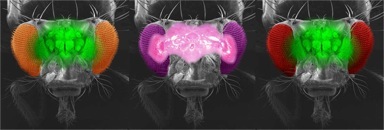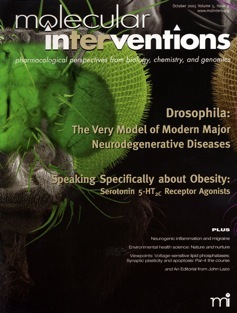
 Michael Palladino, Ph.D.
Michael Palladino, Ph.D.
Associate Professor of Pharmacology & Chemical Biology
University of Pittsburgh SOM
The Palladino lab uses Drosophila (the fruit fly) as a genetic model system to elucidate the cellular and molecular mechanisms of neurodegenerative diseases. Our lab has identified a large collection of novel neurodegenerative mutants using a powerful forward genetic approach. Characterization of these mutants will identify key proteins required for neural maintenance with age and a detailed understanding of the role of these gene products in human disease conditions. Our research program is directed toward three main goals: 1) discovering and characterizing novel pathways that cause neurodegenerative diseases, 2) understanding the physiological, cellular and molecular dysfunction that causes neurodegeneration in vivo, and 3) using our animal system in pharmacological screens to identify neuroprotective compounds for the treatment of human neurodegenerative diseases. We are currently focusing on elucidating the mechanism by which mutations affecting Na/K ATPase, triose phosphate isomerase (TPI), and ATP6 function result in RDP (rapid-onset dystonia parkinsonism), glycolytic enzymopthy, and mitochondrial encephalaomyopathy, respectively.
Links:
Recent Publications:
- Palladino, Michael J., Liam P. Keegan, Mary A. O’Connell and Robert A. Reenan (2000). A-to-I pre-mRNA editing in Drosophila is primarily involved in adult nervous system function and integrity. Cell, 102 (4): 437-449.
- Palladino, Michael J., Tricia J. Hadley, and Barry Ganetzky (2002). Temperature-sensitive paralytic mutants are enriched for those causing neurodegeneration in Drosophila. Genetics 161 (3): 1197-1208.
- Palladino, Michael J., Jill E. Bower, Robert Kreber and Barry Ganetzky (2003). Neural dysfunction and neurodegeneration in Drosophila Na+/K+ ATPase alpha subunit mutants. Journal of Neuroscience 23 (4): 1276-86.
- Celotto, Alicia and Michael J. Palladino (2005). Drosophila, a “model” model system to study neurodegeneration. Molecular interventions. Mol. Interv. 5, 292-303.
- Tim Fergestad, Barry Ganetzky and Michael J. Palladino (2005). Neuropathology in Drosophila Membrane Excitability Mutants. Genetics 172:1031-1042.
- Alicia M. Celotto, Adam C. Frank, Steven W. McGrath, Timothy J. Fergestad, Wayne A. Van Voorhies, Karolyn Buttle, Carmen A. Mannella and Michael J. Palladino (2006). Mitochondrial Encephalomyopathies in Drosophila. Journal of Neuroscience. 26(3): 810-820.
- Paul, Sarah M., Michael J. Palladino, and Greg. J. Beitel (2007). A pump-independent function of the Na,K-ATPase is required for epithelial junction function and tracheal tube-size control. Development, 134(1):147-55.
- Tim Fergestad, Lisa Olson, Khelan P. Patel, Rosie Miller, Michael J. Palladino, and Barry Ganetzky (2007). Neuropathology in Drosophila Mutants With Increased Seizure Susceptibility. GENETICS, 178: 947-956.
- Jacquelyn L. Seigle, Alicia M. Celotto, and Michael J. Palladino (2008). Degradation of functional TPI protein underlies sugarkill neuropathology. GENETICS: 179(2):855-862.
- Mark T. Langhans and Michael J. Palladino (2008). Cleavage of mispaired heteroduplex DNA substrates by numerous restriction enzymes. Current Issues in Molecular Biology, 11:1-12.
Palladino Lab Members:
Dr. Michael Palladino - Lab PI
Fortuna Arumemi - Research Fellow
Matt Baumgartner - Work Study
Sarah Boarts - Work Study
Dr. Alicia Celotto - Faculty Instructor
Usma Chatha - Work Study
John Chaves - Work Study
Alex Doyle - Work Study
Broderick Engelhard - Work Study
Mallory Hensel - Independent Researcher
Rebecca Kennedy - Student Researcher
Rob Kiernan - Work Study
Brian Kosik - Student Researcher
Laurentiu Maerean
Alicia Olson - Work Study
Krupa Patel - Work Study
James Repko - Research Assistant II
Bart Roland - Graduate Student
Kimberly Stuchul - Research Fellow
Megan Wolfe - Work Study
Keith Yatsko - Work Study
Wendy Yun - Student Volunteer


